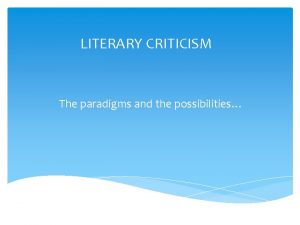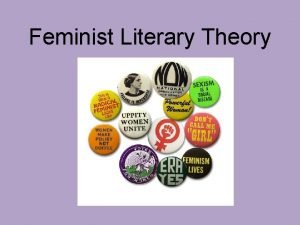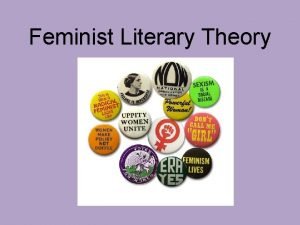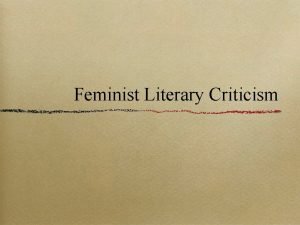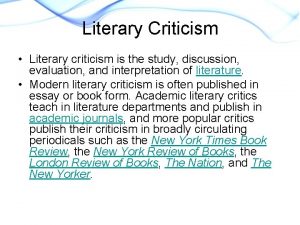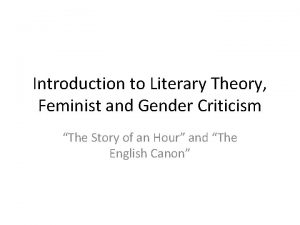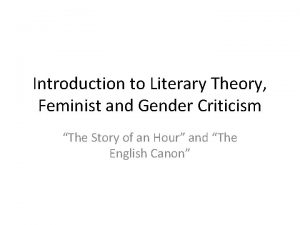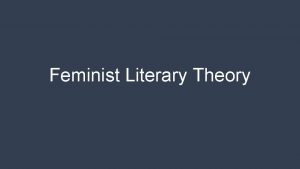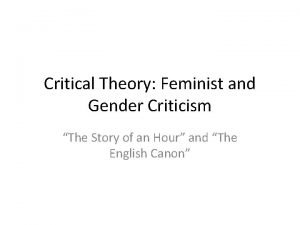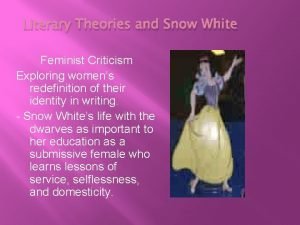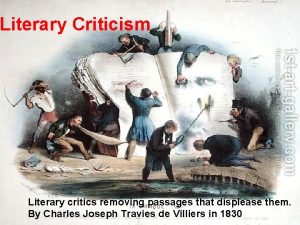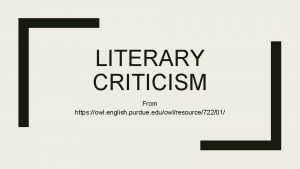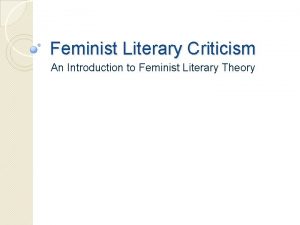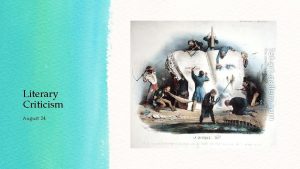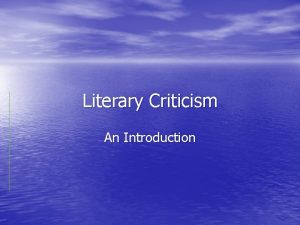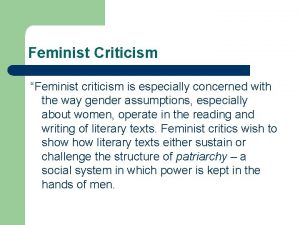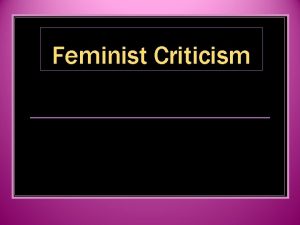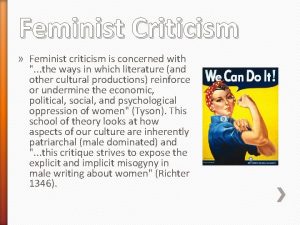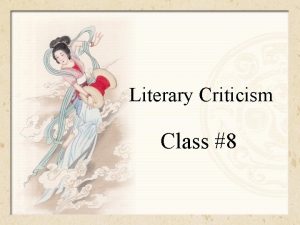Feminist Literary Criticism Origin Grew out of the











- Slides: 11

Feminist Literary Criticism

Origin Grew out of the women’s movements following WWII.

Two basic forms. . . Feminist Criticism - analysis of the depiction of women and their relation to the woman reader by male authors. Gynocriticism - the study of women’s writing.

What does Feminist Criticism do? Concerned with recovering neglected works by women authors i. e. Nikki Giovanni & Zora Neale Hurston Creating a canon of women’s writing.

Female Role Consider the roles and situations of female characters. Make lists of different aspects of the female character’s place in the overall story. Include anecdotal scenarios that will back up your thesis.

Female Relationship Look at the relationship of female characters to each other. Examine any discrepancies that might shed light on the overall role of females in the story.

Woman vs. Man Review the role of female characters in relation to their male counterparts. Literary criticism has its famous set of contrasts (i. e. man vs. nature, man vs. society) that set up points of inquiry. In this case, your fundamental contrast would be woman vs. man.

The Working Woman Look at the vocational roles of women in literature. Much of literary criticism can be applied to the workplace. Studying the work that each character does provides a great starting point for analyzing the whole of the work.

The Female Worldview Consider the attitudes of characters and how their world-views contribute to the eventual outcomes in the story. The goals of characters may not cause outcomes. Evaluate how “powerful” each character becomes.

Some questions to consider. . . How are the lives of men and women portrayed in the work? Do the men and women in the work accept or reject these roles? Is the form and content of the work influenced by the author’s gender?

Questions cont. . . How are attitudes explicit or implicit concerning heterosexual or homosexual relationships? Are these relationships sources of conflict? Do they provide resolutions to conflicts? Does the work challenge or affirm traditional ideas about men and women and same-sex relationships?
 Definition of psychoanalytic criticism
Definition of psychoanalytic criticism Phallocentrism
Phallocentrism Feminist criticism
Feminist criticism Feminist literary criticism ppt
Feminist literary criticism ppt Feminist literary approach
Feminist literary approach Feminist criticism of the story of an hour
Feminist criticism of the story of an hour Feminist criticism in the story of an hour
Feminist criticism in the story of an hour Feminist criticism questions
Feminist criticism questions Feminist criticism in the story of an hour
Feminist criticism in the story of an hour Feminist critical lens
Feminist critical lens Archetypal criticism questions
Archetypal criticism questions Owl purdue literary criticism
Owl purdue literary criticism
